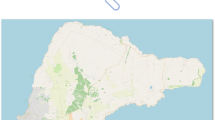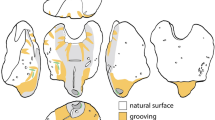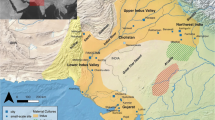Abstract
IN 1925, F. Hrozny discovered the source of the “Cappadocian” tablets near the village of Kültepe (38° 44′ N, 35° 34′ E). These cuneiform tablets provide a foundation for study of the pre-Hittite (circa 1940 BC to 1740 BC) network of Assyrian merchant colonies in Bronze Age Anatolia1. Bilgic2 has published the names of 119 towns active in this exchange, as evidenced by their citation on a tablet. The exact location of most of these sites is not known, and historical and archaeological investigations would be greatly facilitated if they could be found. We have used Bilgic's compilation to estimate the geographical position of several of the towns, in the sense of Bunge3, which is conditional on several assumptions. We invoke assumptions to enhance the analysis by applying the leverage obtained from geographical theory. We assume, for example, that mathematical models based on contemporary (largely western) data have a temporally and geographically invariant structure and can be applied to the Cappadocian situation. Our approach differs from several previous attempts1,2,4, to which it should be considered complementary rather than competitive. For example, we do not require the existence of itineraries; the mere mention of two town names on the same tablet is taken to define a relation between these towns. We recognize that one of the simplest geographical relations is distance and attempt to convert the tabular data into geographical distances. If this is possible then it is an almost routine matter to convert these distances into relative positions. Thus it may be possible to specify the actual locations of the towns; that is, to predict their latitude and longitude. The simplest model asserts that places which are mentioned together frequently are probably closer together than are places which are not mentioned together frequently. This spatial decay is similar to the temporal decay of linguistic relations postulated in glottochronology5, or of isotopic changes used in radiocarbon dating6. Our procedure attempts to estimate spatial, rather than temporal, origins and can be considered the geographical equivalent to these methods. It also has comparable limitations. We know of no previous use of the procedure presented here.
This is a preview of subscription content, access via your institution
Access options
Subscribe to this journal
Receive 51 print issues and online access
$199.00 per year
only $3.90 per issue
Buy this article
- Purchase on Springer Link
- Instant access to full article PDF
Prices may be subject to local taxes which are calculated during checkout
Similar content being viewed by others

References
Garelli, P., Les Assyriens en Cappadoce (Maisonneuve, Paris, 1963).
Bilgic, E., Arch. Orientforsch., 50, 1 (1951).
Bunge, W., Theoret. Geog. (Gleerup, Lund, 1966).
Garstang, J., and Gurney, O., The Geography of the Hittite Empire (British Institute of Archaeology, Ankara, 1959).
Gudschinsky, S., Word, 12, 175 (1956).
Libby, W., Science, 159, 621 (1961).
Olsson, G., Distance and Human Interaction (Regional Science Association, Philadelphia, 1965).
Isard, W., et al., Methods of Regional Analysis (Wiley, New York, 1960).
Niedercorn, J., and Bechdolt, B., J. Reg. Sci. Assoc., 9, 273 (1969).
Tobler, W., Detwyler, T., and Mielke, H., Bioscience, 20, 537 (1970).
Wolf, P., Surveying and Mapping, 29, 635 (1969).
Guttman, L., Psychometrika, 33, 469 (1968).
Lingoes, J., and Roskam, E., Multivariate Behavioral Research, 5, 183 (1970).
Shepard, R., J. Math. Psychol., 2, 287 (1966).
Gelb, I., Oriental Institute Publications, 27 (University of Chicago Press, 1935).
Gardin, J., in The Use of Computers in Anthropology (edit. by Hymes, D.) (Moulton, The Hague, 1965).
Orlin, L., Assyrian Colonies in Cappadocia (Moulton, The Hague, 1970).
Author information
Authors and Affiliations
Rights and permissions
About this article
Cite this article
TOBLER, W., WINEBURG, S. A Cappadocian Speculation. Nature 231, 39–41 (1971). https://doi.org/10.1038/231039a0
Received:
Revised:
Issue Date:
DOI: https://doi.org/10.1038/231039a0
This article is cited by
-
Review of the gravity model: origins and critical analysis of its theoretical development
SN Business & Economics (2023)
-
Analysis of Web Visit Histories, Part I: Distance-Based Visualization of Sequence Rules
Journal of Classification (2016)
-
Where is Lowland Maya archaeology headed?
Journal of Archaeological Research (1995)
-
Analysis of asymmetry by a slide-vector
Psychometrika (1993)
Comments
By submitting a comment you agree to abide by our Terms and Community Guidelines. If you find something abusive or that does not comply with our terms or guidelines please flag it as inappropriate.


